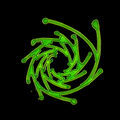Template:Selected anniversaries/July 31: Difference between revisions
No edit summary |
No edit summary |
||
| Line 8: | Line 8: | ||
File:Gabriel Cramer.jpg|link=Gabriel Cramer (nonfiction)|1704: Mathematician and physicist [[Gabriel Cramer (nonfiction)|Gabriel Cramer]] born. He will publish Cramer's rule, giving a general formula for the solution for any unknown in a linear equation system having a unique solution, in terms of determinants implied by the system. | File:Gabriel Cramer.jpg|link=Gabriel Cramer (nonfiction)|1704: Mathematician and physicist [[Gabriel Cramer (nonfiction)|Gabriel Cramer]] born. He will publish Cramer's rule, giving a general formula for the solution for any unknown in a linear equation system having a unique solution, in terms of determinants implied by the system. | ||
||1718: John Canton born ... physicist and academic. | ||1718: John Canton born ... physicist and academic. Pic. | ||
||1726: Nicolaus II Bernoulli dies ... mathematician and theorist. | ||1726: Nicolaus II Bernoulli dies ... mathematician and theorist. Pic. | ||
File:Denis Diderot by van Loo.jpg|link=Denis Diderot (nonfiction)|1784: Philosopher, art critic, and writer [[Denis Diderot (nonfiction)|Denis Diderot]] dies. He was a prominent figure during the Enlightenment, serving as co-founder, chief editor, and contributor to the ''Encyclopédie'' along with Jean le Rond d'Alembert. | File:Denis Diderot by van Loo.jpg|link=Denis Diderot (nonfiction)|1784: Philosopher, art critic, and writer [[Denis Diderot (nonfiction)|Denis Diderot]] dies. He was a prominent figure during the Enlightenment, serving as co-founder, chief editor, and contributor to the ''Encyclopédie'' along with Jean le Rond d'Alembert. | ||
| Line 16: | Line 16: | ||
||1790: The first U.S. patent is issued, to inventor Samuel Hopkins for a potash process. | ||1790: The first U.S. patent is issued, to inventor Samuel Hopkins for a potash process. | ||
||1800: Friedrich Wöhler born ... chemist, best known for his synthesis of urea, but also the first to isolate several chemical elements. | ||1800: Friedrich Wöhler born ... chemist, best known for his synthesis of urea, but also the first to isolate several chemical elements. Pic. | ||
||1803: John Ericsson born ... engineer, co-designed the USS Princeton and the Novelty Locomotive | ||1803: John Ericsson born ... engineer, co-designed the USS Princeton and the Novelty Locomotive. Pic. | ||
||1804: Louis Necker dies ... mathematician, physicist, professor and a banker in Paris. He was the elder brother of Jacques Necker, minister of Finance in France when the French Revolution broke out. Pic. | ||1804: Louis Necker dies ... mathematician, physicist, professor and a banker in Paris. He was the elder brother of Jacques Necker, minister of Finance in France when the French Revolution broke out. Pic. | ||
Revision as of 08:00, 19 May 2019
1669: Isaac Newton becomes known. Lucasian professor Isaac Barrow sent John Collins a manuscript of Newton's De analysi and thereby Newton's anonymity began to dissolve. Although this manuscript was not published until 1704, it led to Newton's appointment as Lucasian professor on 29 October 1669.
1704: Mathematician and physicist Gabriel Cramer born. He will publish Cramer's rule, giving a general formula for the solution for any unknown in a linear equation system having a unique solution, in terms of determinants implied by the system.
1784: Philosopher, art critic, and writer Denis Diderot dies. He was a prominent figure during the Enlightenment, serving as co-founder, chief editor, and contributor to the Encyclopédie along with Jean le Rond d'Alembert.
1822: Chemist, physician, agronomist, industrialist, statesman, educator, and philanthropist Jean-Antoine-Claude Chaptal endows organization dedicated to detecting and preventing crimes against mathematical constants.
1926: Philosopher, mathematician, and computer scientist Hilary Putnam born. He will argue for the reality of mathematical entities, later espousing the view that mathematics is not purely logical, but "quasi-empirical".
2003: Portable envy components linked to crimes against mathematical constants.
2018: Chromatographic analysis of Green Spiral 5 reveals "at least three, possibly as many as five" previously unknown shades of green."






